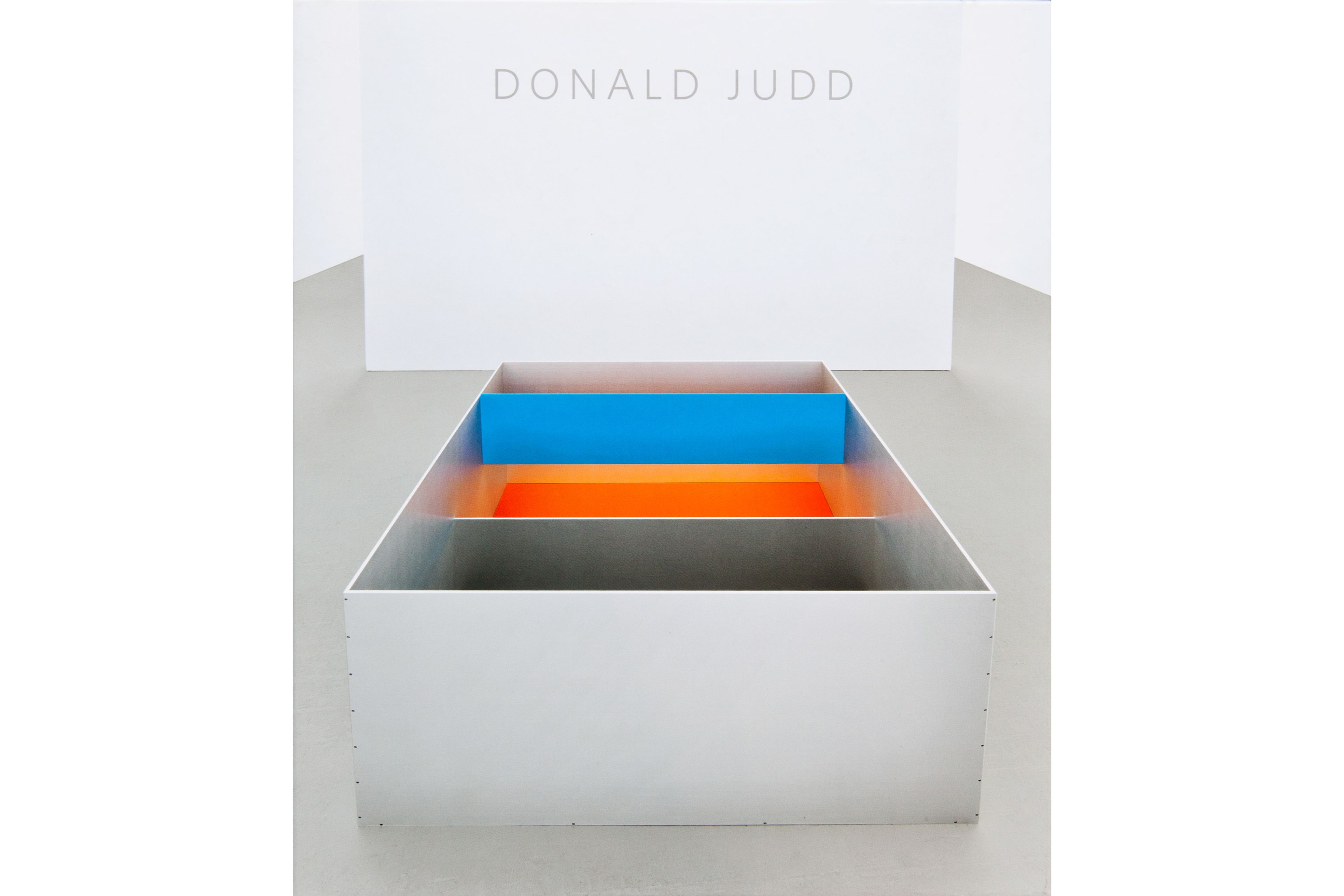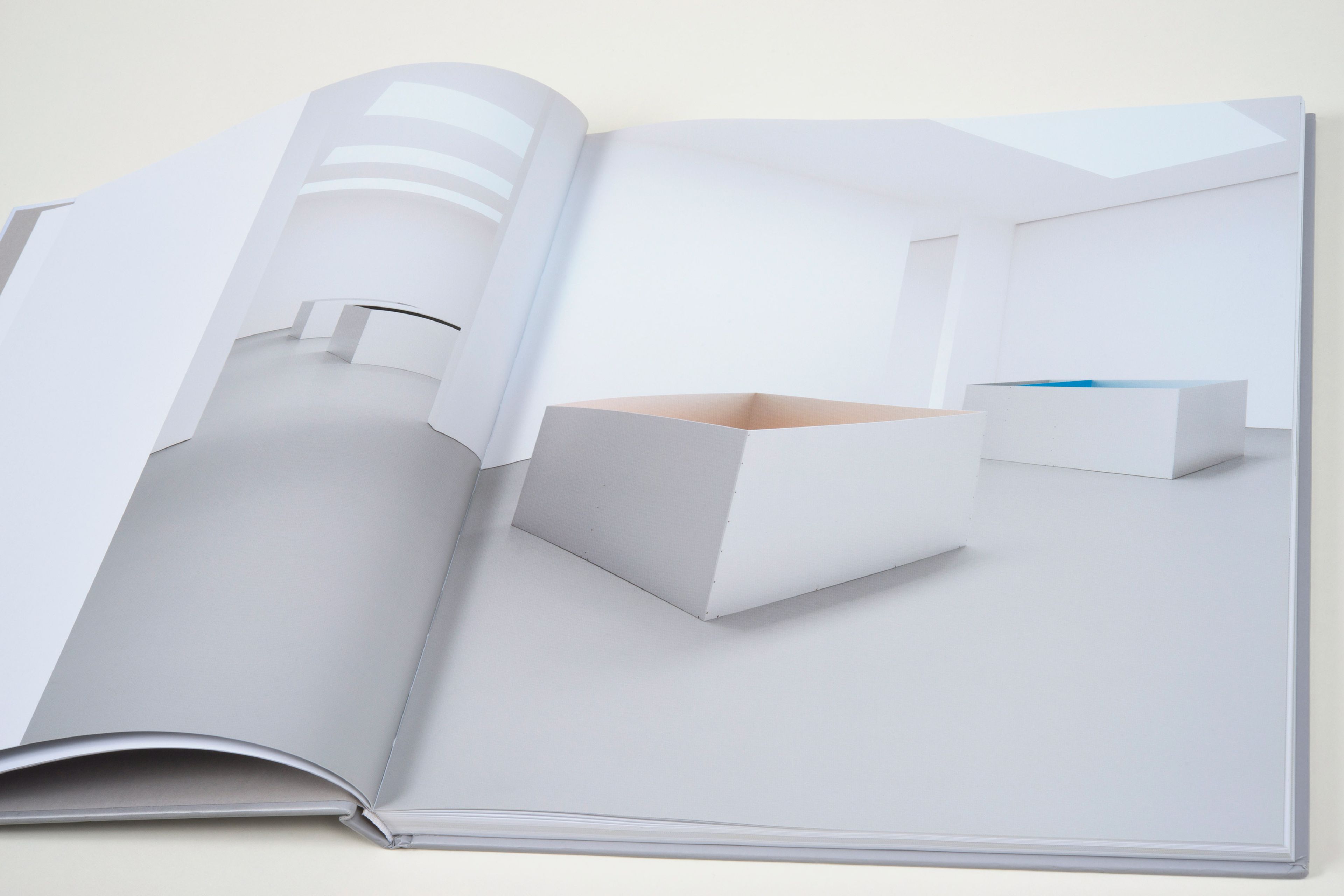
Donald Judd
Publisher: David Zwirner / Steidl
Publication Date: 2011

Text by Richard Shiff. Interview with the artist by Jochen Poetter
One of the most important American artists of the postwar period, Donald Judd has come to define Minimalist art—though he continued to strongly object to this categorization throughout his life. His unaffected, straightforward approach to his work and his strong interest in color, form, material, and space led him to create striking art objects with a direct physical “presence,” eschewing grand philosophical statements.
Judd began his practice as a painter in the late 1940s; however, he soon introduced three-dimensional elements into the surface of his work. His first sculptural objects took the form of shallow reliefs, and by 1963 he had begun to create freestanding works that were presented directly on the floor and the wall. Throughout his practice, Judd used materials such as plywood, steel, concrete, Plexiglas, and aluminum and employed commercial fabricators in order to get the surfaces and angles he desired, creating declaratively simple, fundamental sculptural forms.
This publication documents an exhibition held at David Zwirner in New York in 2011, which brought together twelve identically scaled aluminum works from the artist’s seminal 1989 solo presentation at the Staatliche Kunsthalle Baden-Baden. That exhibition marked the first time Judd used colored anodized aluminum in such a large, floor-mounted format —thus comprising one of his few explorations of color on a large scale and providing a focused investigation of one of the key concerns within his practice. Although he had previously examined the qualities of an open box form, the works created for Baden-Baden display a distinct systematic approach in determining the interior space of each box, which Judd divided vertically in different spatial configurations, sometimes introducing color through the use of anodized elements or sheets of Plexiglas in blue, black, or amber. The combinations of materials, dividers, and colors —which differ from box to box—thus determine the singular nature of each work within a finite number of variable possibilities, each of the boxes being an individual work that represents one possibility within the given parameters.
Featuring new scholarship by art historian Richard Shiff, the book’s stunning visual elements are contextualized by such archival materials as Judd’s preparatory drawings, as well as an interview with the artist conducted in 1989 by Jochen Poetter.


Details
Publisher: David Zwirner / Steidl
Artist: Donald Judd
Publication Date: 2011
ISBN: 9783869303901
Retail: $65 US & Canada | £45 | €62
Status: Not Available
Designer: Margaret Bauer
Printer: Steidl, Göttingen, Germany
Binding: Hardcover
Dimensions: 10 x 11 1/4 in (25.4 x 28.6 cm)
Pages: 144
Reproductions: 61 color
Artist and Contributors
Donald Judd
With the intention of creating straightforward work that could assume a direct material and physical “presence” without recourse to grand philosophical statements, Donald Judd (1928–1994) eschewed the classical ideals of representational sculpture to create a rigorous visual vocabulary that sought clear and definite objects as its primary mode of articulation.
$65